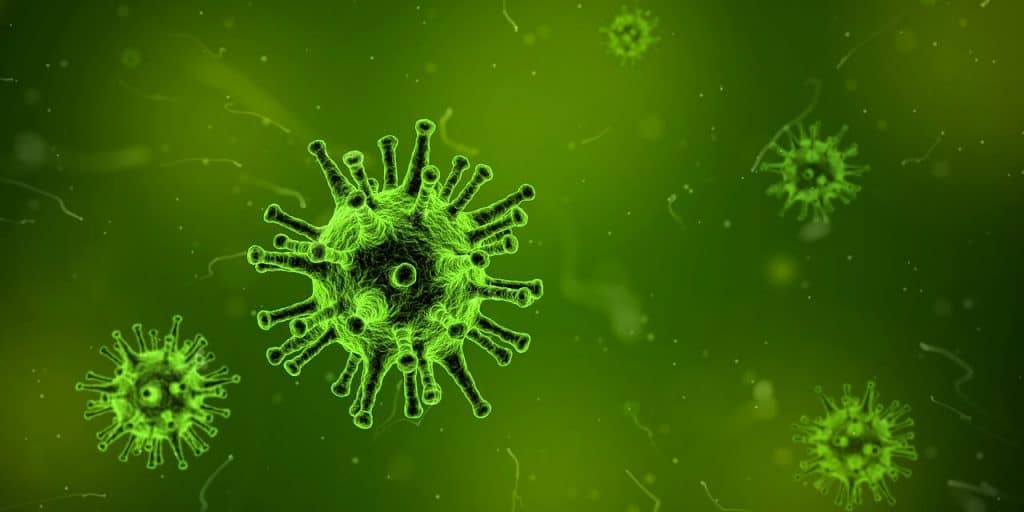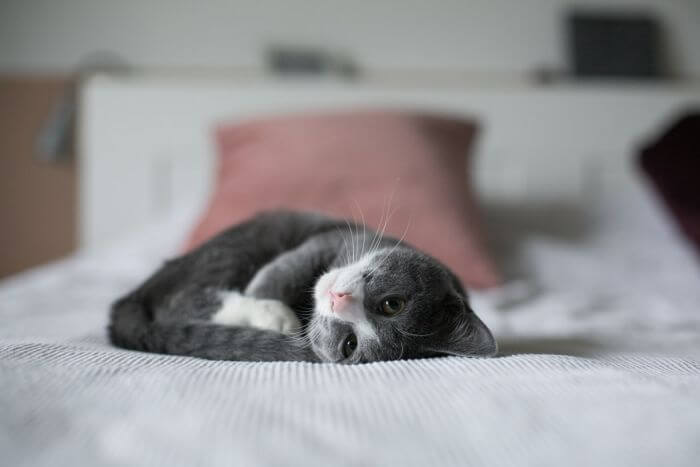Infectious diseases are a common cause of illness seen in cats. Some of these can even be fatal. Cat vaccinations give them the best chance of fighting off these diseases and to help them live long, happy lives.
How do cat vaccinations work?
A cat vaccine works by stimulating a pet’s immune system so they are prepared for when they come in contact with a real virus. Small representative portions of a virus are used to cause the body to produce antibodies. These antibodies latch on to a virus to neutralise it before it takes hold in your cat.

How often do cats need vaccines?
Vaccines are only needed when your cat’s antibody levels for certain viruses are low. Over time, these levels deplete and your cat will require re-vaccination. This time frame can vary for each individual cat. Some cat’s produce a much stronger immune system response than others.
Two choices exist when it comes to vaccinations. You can either re-vaccinate yearly to help keep circulating antibody levels high, or you can have a blood test called a titre test.
Titre Testing
A titre test measures the level of antibodies in your cat’s body to determine if another cat vaccination is actually required at the time. If levels remain high from a previous vaccination, then re-vaccination can be postponed.
Types of Cat Vaccines
F3 : feline rhinotracheitis, calicivirus, panleukopenia.
F4: F3 + chlamydia
F5: F4 + feline luekaemia (FeLV)
F6 (F5 + FIV): F5 + FIV (Feline Aids)
Diseases Covered by Cat Vaccinations
The F3 vaccine is a core vaccine, meaning it is essential for every cat. This covers feline rinotracheitis, calicivirus and panleukopenia, detailed below. An F3 cat vaccination is what we recommend for most indoor cats.
Non core vaccines, including those protecting against chlamydia, feline leukaemia and feline aids are usually only given if your cat goes outdoors or lives in at risk environments.
Your vet will tailor make a vaccination program that is best for your individual cat.
This disease is caused by a herpes virus. Once infected, the virus can lay dormant and reappear during times of stress. Causes cat flu symptoms such as lethargy, sneezing, conjunctivitis, eye and nasal discharge. Severe cases can result in pneumonia.
Calicivirus causes similar symptoms to rinotracheitis, but milder. Infected cats may develop ulcers of the tongue and mouth. It can also cause joint inflammation and temporary lameness.
Related to the canine parvovirus, panleukopenia causes similar gastrointestinal symptoms in cats.
It infects rapidly dividing cells in the bone marrow and intestinal tract, such as white blood cells. Since these cells help fight off disease, the impact of a low white cell count is a cat that is open to severe infection. Infection of the gut leads to severe diarrhoea.
Panleukopenia is spread by contact with faeces or oral secretions from infected cats. Transmission is often through mutual grooming, sharing food or water bowls, mating or bite wounds.
Once a cat is infected with panleukopenia, treating the disease becomes very difficult. This disease is often fatal. However, vaccination works well to prevent it.
Spread by direct contact with other cats. Can cause conjunctivitis and upper respiratory tract disease.
As in people, attacks the immune system making infected cats more susceptible to severe infection.
Prognosis after diagnosis is usually around 2.5 years.
Spread by mutual grooming, sharing food and water bowls, mating or bite wounds from infected cats.
Vaccination is only partially effective. There has been a link between this vaccine and possible injection site sarcomas. This vaccine is only used for outdoor cats in high risk areas where the benefits outweigh the risks.
Similar to HIV in people, FIV is a blood borne viral infection that affects a cat’s immune system.
It can be fatal by making them susceptible to severe infections and disease.
FIV is spread by bite wounds or from a mother cat to her kittens via the milk or placenta.
Approximately 15-30% of cats in Australia test positive for FIV each year. Outdoor cats are at the highest risk. This is especially the case for those prone to fighting such as outdoor, undesexed, male cats.
There is a vaccine available, but unfortunately it is not 100% effective at preventing the disease.
Cat Vaccination Schedule
Our recommended cat vaccination schedule is as follows:
Kittens:
Strictly Indoor Only
8 weeks: F3 vaccination
12 weeks: F3 vaccination
Some Outdoor Exposure
8 weeks: F5 + FIV
10 weeks: FIV
12 weeks: F5 + FIV
Adult Cats:
Yearly: F3 (indoor) or F5+FIV (outdoor) vaccination

Vaccination Side Effects
Because vaccinations stimulate a pet’s immune system, they should only be given to healthy animals. Vaccination side effects in healthy animals are rare and when they occur are usually mild and self-limiting. The risk and severity is considered far less than that of your pet contracting the actual diseases the vaccines protect against. Side effects may involve temporary swelling or hair loss at the site of vaccine injection, fever, mild lethargy and sleepiness for 24-48 hours after the vaccination.
As with all drugs, very rare, more serious systemic reactions are still possible. This may include severe anaphylactic reactions.
If your pet experiences the following symptoms, be sure to contact a vet:
- lethargy
- incoordination
- difficulty breathing
- loss of appetite
- vomiting
- diarrhoea
Some pets react not to the vaccine but to the type of carrier agent the vaccine comes with. As a result, trialling a different brand of vaccine may be useful when adverse reactions occur.
FAQ
Below are some our client's most frequently asked questions about cat vaccinations.
Kittens should have their first vaccination at 8 weeks of age, followed by a booster 3-4 weeks later. If vaccinating against FIV (feline aids), a third booster will be required as well.
Adult cats should have a yearly booster injection.
It depends on how long it has been since the last vaccination, but usually you can resume a yearly booster protocol at the earliest.
Occasionally, a second booster 4 weeks later may be needed if your cat is long overdue.
If your pet has had an adverse reaction previously to a vaccine it is important to discuss this with the vet. Sometimes an alternate vaccine can be given, or a different brand. A pre-medication may also be given in certain situations.
Your vet will work with you to weigh the risk vs benefits for your individual cat to formulate a plan.
Since vaccines are usually elective, it is best to avoid this during pregnancy or lactation.
Adverse reactions are rare and usually mild and self limiting, lasting only 24 hours or so (similar to the reaction some people have). This is usually limited to mild lethargy and a slight decrease in appetite for a day.
However as with all medication, more severe anaphylactic reactions are still possible. These can include hives, collapse, vomiting or prolonged fever.
It is important for this reason to watch you cat for a few hours immediately after vaccination, particularly if they have never been vaccinated before. If symptoms occur, contact your vet immediately.
